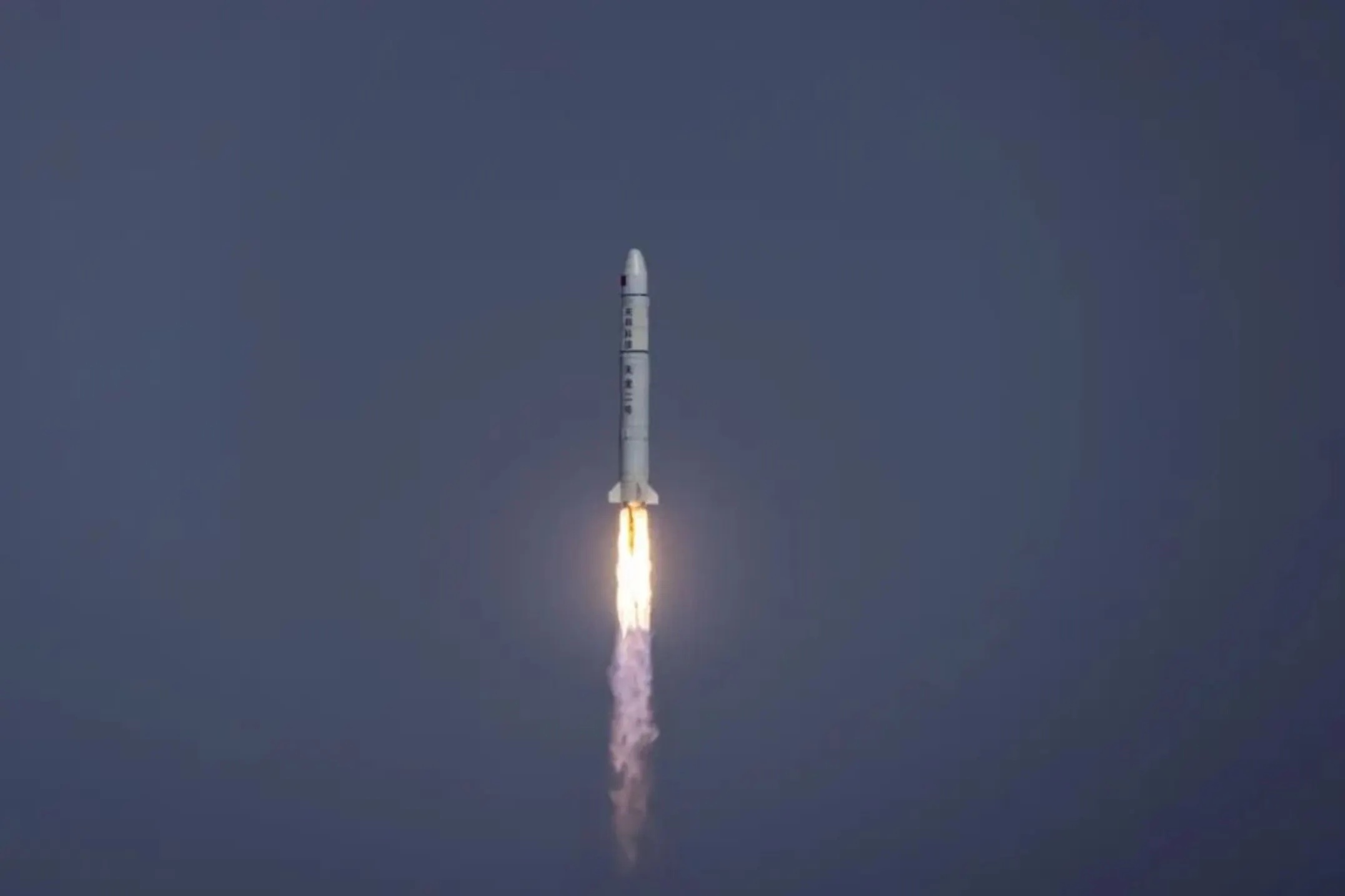29.06.2023

The first Tianlong-2 rises into the skies above Jiuquan spaceport on April 2, 2023. Credit: Space Pioneer
HELSINKI — Chinese rocket firm Space Pioneer is planning to launch a rocket comparable to the SpaceX Falcon 9 next year.
Liu Xinglong, chief designer of the Tianlong-3 launcher, said the company is targeting a test launch in May 2024, Shanghai Observer reported June 25.
Tianlong-3 (“Sky Dragon-3”) is a two-stage kerosene-liquid oxygen rocket with a reusable first stage. Space Pioneer’s webpages state that the rocket will be capable of lifting 17 tons of payload to low Earth orbit, or 14 tons to 500-kilometer sun-synchronous orbit.
In comparison the Falcon 9 Full Thrust can carry 22.8 tons to LEO when in expendable mode.
The 71-meter-long Tianlong-3 will have a diameter of 3.8 meters. It will have a takeoff mass of 590 tons and produce 770 tons of thrust.
The first launch will be expendable but, like the Falcon 9, the Tianlong-3 is designed to be reusable. The first stage will be powered by Tianhuo-12 variable thrust engines, each producing 110 tons of thrust. The first stage is designed to be reused up to 10 times.
The rocket would offer China considerable new launch capacity, being second only to China’s Long March 5B in terms of launching payload to LEO, and being more versatile. The rocket would also, if qualified for reusability, provide China with reusable launch capability.
Space Pioneer is one of the newer entrants into China’s commercial launch scene. Its plans to move straight to much larger launch vehicles than those in development by earlier movers reflect changes in the perceived opportunities for the commercial launch in the country.
The company has stated that it is targeting launching batches of satellites for China’s Guowang LEO communications megaconstellation. The country’s main state-owned space contractor CASC is planning to ramp up production of its Long March 5B and Long March 8 rockets to get the Guowang project off the ground.
Space Pioneer is also financially well backed. It announced Feb. 15 that it secured “B+ and “Pre-C” strategic funding rounds. The company says it has raised nearly 3 billion yuan ($438 million) in funding since its founding in 2018. A number of these investors are linked to the state.
The firm also states plans for the Tianlong-3H, a triple-core version in the same style as the SpaceX Falcon Heavy, and the Tianlong-3M, a single core rocket tipped with a reusable spaceplane.
Space Pioneer announced itself as a major player with a debut launch in early April that made the firm the first Chinese commercial entity to reach orbit with a liquid propellant rocket.
The Tianlong-2 rocket used 85-ton-thrust, YF-102 gas generator engines developed by CASC, rather than its own Tianhuo engines.
Notably the propellant mix for the Tianlong-2 launch used rocket grade kerosene derived from coal, secured through cooperation with the 165 Institute of CASC’s Academy of Aerospace Liquid Propulsion Technology. China has rich coal resources but relatively limited oil reserves, making the use of coal for rocket fuel for the country’s burgeoning space industry attractive.
CASC states that the development of the coal-derived rocket fuel is a national strategic initiative. It plans to build the capacity to produce an annual output of about 30,000 tons.
Meanwhile Landspace, which in December conducted the first launch of a privately developed Chinese liquid propellant rocket, is preparing for a second launch of its methalox Zhuque-2. That launch from Jiuquan is expected next month. Landspace plans to make the rocket reusable.
Other reusable Chinese commercial rockets are in development. Galactic Energy plans to test launch the Pallas-1 (5,000 kilograms to LEO, or 3,000 kilograms to 700-km SSO) in 2024, while Deep Blue Aerospace is developing the smaller Nebula-1 rocket and iSpace is developing the methalox Hyperbola-2.
Chinese commercial plans suggest launches for this year could more than double their rate over 2022. “If the planned launch tempo for 2023 is successful it might represent the opening of capability that would provide momentum to deployment of Chinese small satellite constellations,” Ian Christensen, director of private sector programs at the Secure World Foundation, told SpaceNews in February.
This growth compliments a surge in launch rate from CASC, which plans more than 60 launches this year. The country conducted 19 launches in 2015, rising to 64 orbital missions in 2022.
Quelle: SN

